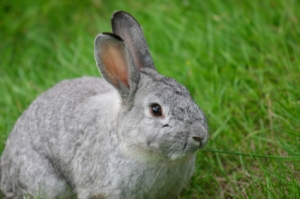
Councils and communities across the country have completed the Great Australian Rabbit Census. Image: iStock.
By Rachel Borchardt
During RabbitScan month, which was held nationally throughout May, people were asked to scan their landscape — including schools, parks and farms – then count rabbit numbers and impacted areas and upload their results online as part of ‘the Great Australian rabbit census’.
Scientists will then map rabbit locations and release formal reports and advice.
Feral rabbits rate in the top three pests in Australia, according to the Invasive Animals Cooperative Research Centre (IACRC).
The RabbitScan project was recently initiated by RMAG (Rabbit Management Advisory Group), a group that includes landholders, industry, scientific and government experts. Scanning is being held this year to mark the 150th anniversary of the wild pest rabbit release in Australia near Geelong in 1859.
Bundaberg Regional Council was one of more than 2200 organisations and individuals that jumped on board to help during RabbitScan month.
With rabbits estimated to cause more than $200 million dollars worth of damage to the agricultural industry each year, Bundaberg Regional Council Land Protection Coordinator Eric Dyke said it was a problem that councils and communities must take seriously.
“Rabbits pose a major threat to the environment Australia wide.”
Although biological controls such as the myxoma virus have depleted rabbit numbers in the past, the threat to the environment has risen. Dyke said scientists required more information on population numbers and locations to stop further spread.
“An overall picture to see how big the problem actually is [will be] good, because to get funding you’ve got to have all sorts of statistical information available.”
He said research results would help government determine future control options.
“In some areas these biological agents for some reason don’t seem to work as well as they do in other areas.”
Comment below to have your say on this story.
If you have a news story or tip-off, get in touch at editorial@governmentnews.com.au.
Sign up to the Government News newsletter
